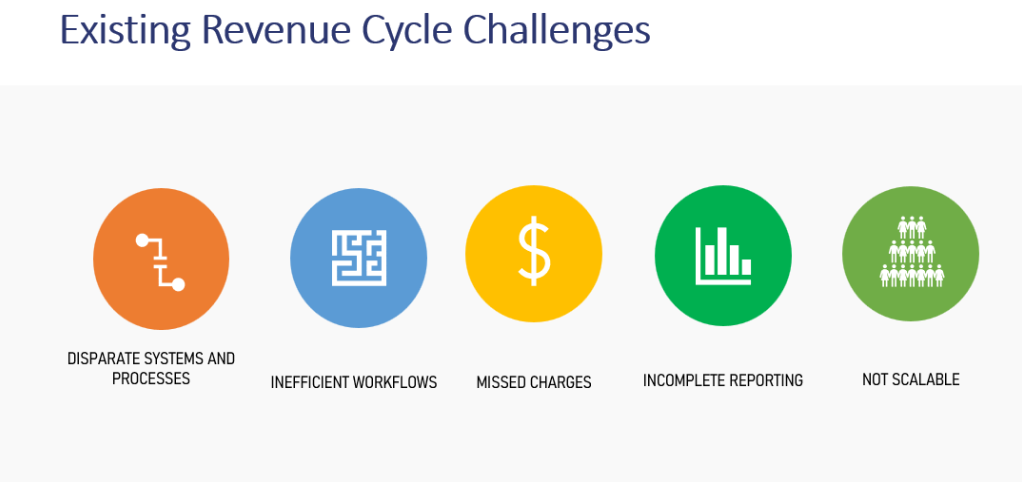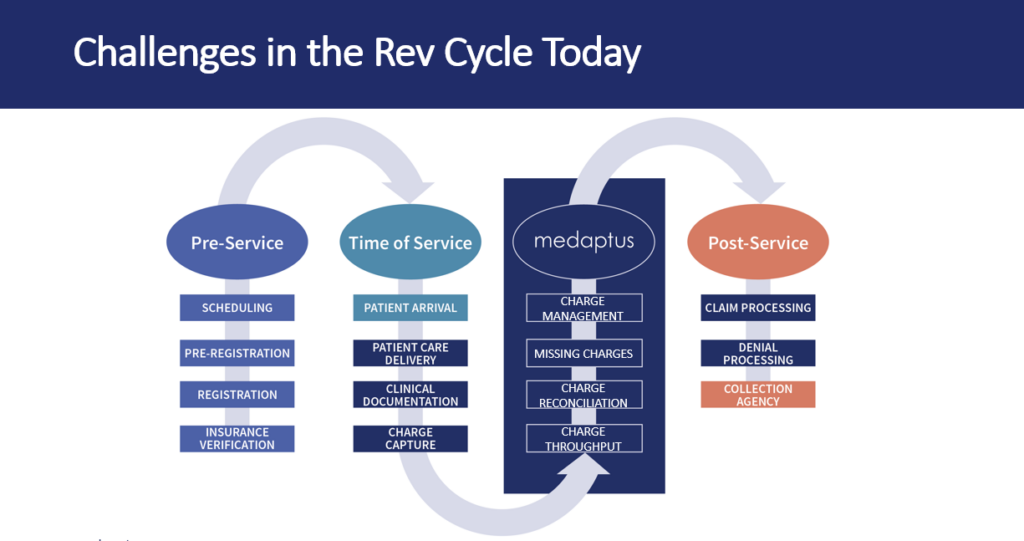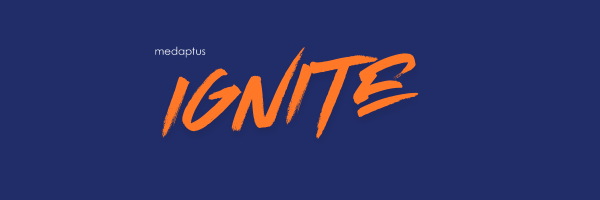Charge entry and charge capture are two very important parts of the billing cycle and may also be referred to as the reconciliation process. To maximize reimbursements, it is important that providers are documenting the correct type of codes, and it is also very important that the coders in the charge entry process catch any errors to mitigate compliance issues and denials.
What is Charge capture in healthcare?
Charge capture is the process of a healthcare provider documenting and recording their performed services and submitting those charges for payment to a patient or insurance company. In order to successfully generate revenue, charges must not only be captured but also be complete, accurate, and properly entered into a charge capture solution where it can be sent to billing.
Charge capture vs. charge entry
Charge capture and charge entry are two different parts of the same process, but the terms are often used interchangeably. The main difference in charge capture and charge entry is one is action-based whilst the other is function-based.
Charge capture typically refers to the process of just getting the charge in the door. A physician sees a patient, and needs to document who they saw, when they saw them, and what they saw them for. In most healthcare settings, they have to submit charges that are then reviewed by the coding and billing teams.
Charge entry is a set of processes that include steps like:
- Coders review charges to check for validity
- Coders review provider documentation to ensure it matches the codes
- Coders communicate back to providers to request any missing information
- Charges are sent to payors for billing.
Charge capture and charge entry in healthcare is a complex process, and a simple error can result in a lower reimbursement or reconciliation issues. A charge capture software like our Charge Pro solution automates many processes so that you can reduce revenue leakage and automate charge processing, ultimately allowing providers and staff to be able to focus on the most important thing – the patient.
Overview of Charge Pro
The main focus points of Charge Pro are to identify missed revenue opportunities, catch under-billed encounters, get real-time insights into the health of your organization to improve your charge lag, accelerate cash flow, and decrease insurance denials.
Common charge capture challenges we solve
A few common challenges in the revenue cycle include disparate processes, inefficient workflows, missed charges, and incomplete reporting. These challenges can happen at any point in the revenue cycle, but they mostly occur between the time of service and post service phases. Protracted charge lag, late and missing charges, incorrectly coded encounters and overall decentralization can negatively impact revenue across many clinical areas.

- When choosing a charge capture solution vendor, there is a lot to consider. Medaptus makes it a more accurate and easy process for both charge capture and charge entry. For example, we help:
- Identify missed revenue opportunities
- Reconcile charges-to-documentation
- Improve productivity
- Integrate with our patient assignment solution
- Reduce charge lag
- Decrease insurance denials
- Accelerate cash flow
- Automatically apply compliance rules
We also look at each of our customer’s needs and what they require for charge capture vs. charge entry and adjust accordingly. For example, we create coding shortcuts/rules for CPT codes for charge entry. These can be custom or standard codes for charges based upon our customers’ needs. For charge entry, we strive to centralize this information into one easy-to-use view where you can see real-time charge reconciliation and even view under-billed encounters.

Get the latest updates and news delivered to your inbox.
Subscribe to our newsletter today.





